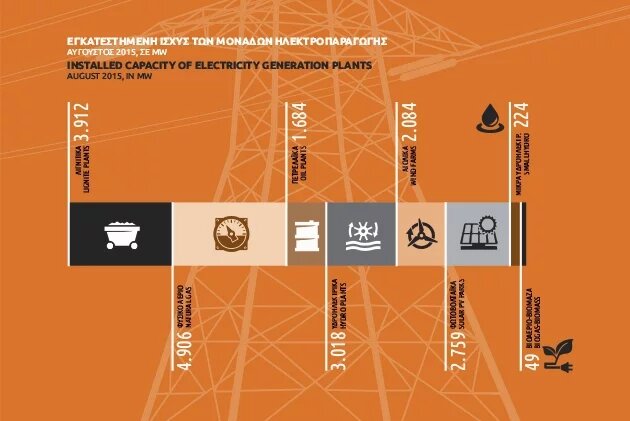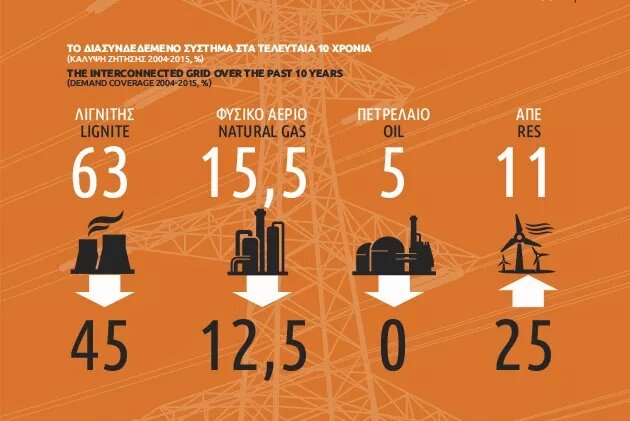

To start with, the Greek electricity sector is peculiar in that it consists of the interconnected continental system and of the non-interconnected stand-alone grids in the islands, where electricity demand is catered to by oil-fired plants and to a smaller extent by RES facilities, in a proportion of approximately 85%-15%.
In the interconnected grid, over the past 10 years the share of lignite in meeting demand has clearly decreased, from 63% in 2004 to 45% in 2014. This decrease has been offset by a similar increase in the shares of RES and hydropower (from 11% to 25%) as well as imports, while the share of natural gas dropped from 15.5% to 12.5% and the share of oil was reduced to zero from 5%.
The installed capacity of electricity generation plants in Greece currently stands as follows (as of August 2015):
- 3,912 MW lignite-fired plants
- 4,906 MW natural gas-fired plants
- 1,684 MW oil-fired plants on the islands
- 3,018 MW hydro plants
- 1,767 MW wind farms in the interconnected grid and 317 MW on the islands
- 2,443 MW solar PV parks in the interconnected grid and 136 MW on the islands
- 224 MW small hydro
- 49 MW biogas - biomass